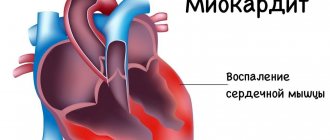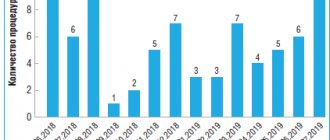The term hypoglycemic coma means an acute condition associated with inhibition, in a certain sequence, of the central nervous system, due to a sharp drop in the concentration of carbohydrates (sugars) in the blood associated with their decrease.
1. Clinical picture and symptoms
2. Reasons for the development of hypoglycemic coma
3. Therapy methods
4. Possible complications
5. First aid
The sequence of inhibition of the central nervous system goes from the highest nervous structures - the cerebral cortex to the gradual inhibition of subcortical structures and centers of the medulla oblongata. Hypoglycemic coma develops acutely and requires emergency medical care, which, if not provided, significantly increases the risk of death due to inhibition of the respiratory and cardiovascular activity of the body.
Coma in diabetes mellitus - types, signs, treatment measures, prevention
Diabetes mellitus is one of the most widespread diseases of the endocrine system, characterized by an absolute or relative lack of insulin in the blood.
Despite many years of experience in studying the causes and methods of treating this pathology, diabetes mellitus remains among the diseases whose complications pose a threat to the patient’s life. Despite the indisputable fact that the body of a person with diabetes adapts to small fluctuations in blood glucose levels over time, a rapid decrease or increase in this indicator often contributes to the development of conditions that require emergency intensive care. These are the so-called acute complications of diabetes mellitus - comatose states, which, depending on the mechanism of development and clinical signs, are divided into several types:
- ketoacidotic coma;
- lactic acidemic coma;
- hyperosmolar coma
- hypoglycemic coma;
Diabetic ketoacidotic coma - causes and mechanism of development, signs
This type of complication develops with an absolute or relative lack of insulin in the body, as well as with impaired tissue utilization of glucose, which develops in patients with severe insulin-dependent diabetes mellitus. The ketoacidotic state develops unexpectedly, but is usually preceded by a number of provoking stress factors, such as an incorrectly selected dose of insulin, a change in drug, cessation of insulin administration for any reason, gross violation of the diet, alcohol abuse, violation of insulin administration technique, increased need for insulin due to the characteristics of the body’s condition (pregnancy, poisoning, surgery, infections, etc.).
The development of ketoacidosis is due to the fact that with a lack of insulin in the body, the process of penetration of glucose into cells is disrupted, which in turn leads to energy depletion of tissues, contributing to organ dysfunction. Despite compensatory hyperglycemia, which develops due to increased production of adrenocorticotropic, somatotropic and other hormones, as well as increased production of glucose in the liver, due to the lack of a sufficient amount of insulin, glucose cannot penetrate the cellular barrier. In this regard, for compensatory purposes to maintain homeostasis, the body begins to receive the missing energy through the active breakdown of fats - lipolysis, and as a result of this biochemical process, ketone bodies (acetone) are formed, an excess amount of which has a depressing effect on the central nervous system, as a result of which ketoacidosis develops coma.
The concentration of ketone bodies in the blood of healthy people is in the range of up to 100 µmol/l, while only traces of acetone can be found in the urine. If the course of diabetes mellitus enters the stage of decompensation, a large number of ketone bodies are formed in the liver due to metabolic changes (up to 1000 mmol/l per day). This amount of ketone bodies cannot be eliminated from the body by muscles and kidneys, so their accumulation leads to ketoacidosis. The condition is aggravated by the formation of a vicious circle, when as a result of the development of ketoacidosis in the blood there is a decrease in the level of immunoreactive insulin, the relative or absolute deficiency of insulin only increases.
The development of ketoacidotic coma is usually slow - from several days to several weeks. If the process develops against the background of acute infectious diseases or severe intoxication, a diabetic coma can develop within a few hours. As a rule, clinically diabetic ketoacidosis goes through three stages, which, in the absence of timely correction, follow one after another.
1. Stage of moderate ketoacidosis
- the patient may complain of general weakness, increased fatigue, tinnitus, lethargy, decreased appetite, thirst, nausea, acute abdominal pain, increased volume of urine excreted. Exhaled air and urine smell like acetone. An increase in sugar levels is detected in the blood and urine.
2. Precoma stage
or
decompensated ketoacidosis
- the patient’s appetite disappears completely, in addition to nausea, vomiting is observed, which increases general weakness. The patient is indifferent to what is happening around him, his vision deteriorates, shortness of breath, pain in the heart and abdomen appears. Against the background of an indomitable feeling of thirst, there is an increase in the urge to urinate, which is explained by a violation of the water-electrolyte balance and excessive removal of electrolytes from the body - potassium, sodium ions, etc. The patients' consciousness is preserved, as is their orientation in space and time, but inhibition is noted when trying to answer questions. The skin is dry, rough, cold. The cheeks are slightly flushed, and the tongue is covered with a brown coating; teeth marks may be visible on it. This stage can last from several hours to several days. In the absence of timely correction of this condition, a deterioration in the patient’s reaction and the transition of the process to the final stage is observed.
3. Stage of coma - the patient is absolutely indifferent and may fall into deep sleep. Upon examination, deep, noisy breathing with a pungent odor of acetone in the exhaled air, decreased blood pressure, and a rapid rhythmic pulse are revealed. Tendon reflexes gradually fade away. There is a decrease in body temperature.
If the development of ketoacidotic coma is suspected, the patient should be immediately hospitalized in order to carry out the necessary set of resuscitation measures.
Features of resuscitation
Resuscitation must be started in adults and children, without waiting for the arrival of ambulance specialists, when symptoms appear: lack of pulse in the carotid arteries, lack of breathing, the skin acquires a gray-bluish tint, the pupils are dilated and do not respond to light.
- Place the patient on the floor or other hard, flat surface.
- Tear or cut outer clothing to provide access to the chest.
- Tilt the patient's head back as far as possible, place one hand on the forehead, and with the other push the patient's lower jaw forward. This technique ensures airway patency.
- Make sure there are no foreign bodies in the mouth and throat, and if necessary, remove mucus with a quick movement.
Compliance with the rules of resuscitation is a step towards its successful completion.
Breathing “mouth to mouth”. A napkin, a piece of gauze or a handkerchief is placed on the patient’s lips. A deep breath is taken, the lips are pressed tightly to the patient’s mouth. Then they exhale forcefully (for 2-3 seconds), while closing the person’s nose. The effectiveness of artificial ventilation can be seen by raising the chest. The frequency of breaths is 16-18 times per minute.
Indirect cardiac massage. Place both hands on the lower third of the sternum (approximately in the center of the chest), standing on the left side of the person. Energetic pushes are performed towards the spine, shifting the surface of the chest by 3-5 cm in adults, 1.5-2 cm in children. The frequency of pressing is 50-60 times per minute.
When combining mouth-to-mouth breathing and cardiac massage, as well as carrying out activities by one person, it is necessary to alternate 1 breath with 4-5 chest compressions. Resuscitation is carried out until emergency personnel arrive or until the person shows signs of life.
If the patient has regained consciousness, do not leave him alone under any circumstances.
Lactic acidotic coma - development mechanism and symptoms
This type of diabetic coma is less common than other types, but is one of the most severe complications of diabetes. This type of coma develops as a result of a complex biochemical reaction - anaerobic glycolysis, which is one of the alternative methods of producing energy, the residual product of which is lactic acid. If in a healthy body the level of lactic acid is in the range of 0.5 - 1.4 mmol/l, then in lactic acidotic coma this figure reaches 2 mmol/l when the blood pH level drops below 7.3. In addition, there is a change in the lactate-pyruvate balance towards an increase in lactate concentration.
Lactic acidotic coma often develops against the background of shock, intoxication, sepsis, extensive blood loss, cardiovascular and renal failure. Despite the fact that the liver is normally capable of processing more than 3 thousand mmol of lactic acid, due to the state of tissue hypoxia that accompanies the above pathological processes, the ability to process lactic acid becomes significantly less than the lactate formed. If patients are given intravenous solutions containing xylitol, sorbitol, fructose and other sugars, this is also a provoking moment for the development of lactic acidotic coma.
The onset of this type of coma is usually sudden, characterized by signs of depression of consciousness (apathy, drowsiness, delirium), as well as rapid loss of appetite, nausea, vomiting, and muscle pain. Upon examination, the patient's skin is pale and cold. The effect of lactic acid on the cardiovascular system is manifested by increased heart rate, decreased blood pressure, impaired excitability and contractility of the myocardium, paresis of peripheral vessels, and collapse.
Patients with the first signs of coma need prompt hospitalization. Confirmation of the diagnosis of lactic acidotic coma is carried out based on laboratory data, namely a high concentration of lactic acid and pyruvate in the blood, as well as a violation of the acid-base balance towards acidification.
Lactacidemic
Lactic acid coma is also called lactic acid coma and develops more often than other types of emergency conditions in diabetes. Lactic acid coma is the most dangerous acute condition, with mortality reaching 75%. This condition can develop against the background of provoking conditions:
- Massive bleeding;
- Myocardial infarction;
- Generalized infectious process;
- Heavy physical activity;
- Kidney or liver failure.
As a result of lactic acidemia, ketone bodies and pyruvic acid are broken down in the blood with the formation of an increase in the concentration of lactate and a decrease in pyruvate - chemicals that shift the acid-base balance of the blood to the acidic side. In 30% of victims, hyperosmolar coma is initially noted.
Clinical picture
{banner_banstat4}
The condition of patients is rapidly deteriorating, and negative dynamics are observed. The onset is usually sudden, with severe development of symptoms. Diabetics note:
- Severe muscle pain and weakness;
- Drowsiness or, conversely, insomnia;
- Severe shortness of breath;
- Abdominal pain with vomiting.
With further deterioration of the condition, convulsions or areflexia associated with muscle paresis may occur. These symptoms arise as a result of brain damage due to energy deficiency and disturbances in the ionic composition of the plasma. Even with proper and timely treatment, the prognosis for a victim of lactic acidemia coma is unfavorable.
Hyperosmolar coma - prerequisites for development, clinical manifestations
Hyperosmolar coma usually develops in patients suffering from mild to moderate non-insulin-dependent diabetes mellitus, who are treated with diet therapy and medications that lower blood sugar levels. This complication often develops in elderly patients with limited mobility, as well as with concomitant pathological processes such as burns, hypothermia, infectious diseases of the kidneys and urinary tract, lungs, pancreas, myocardial infarction, etc., which aggravate the process of impaired blood supply. With a high concentration of sugar in the blood, there is an increase in the excretion of urine from the body by the kidneys, resulting in dehydration, which in turn leads to thickening of the blood and difficulty in its movement through small vessels. The consequence of such microcirculatory disorders is a deficiency of cerebral blood supply.
The development of hyperosmolar coma is extended over time. The first signs are a constant feeling of thirst, increased volume of urine, and general weakness. Increasing dehydration leads to lethargy and clouding of consciousness, hallucinations, convulsions, paresis of the arms and legs. At the first signs of an impending complication, patients should be hospitalized in order to immediately restore water-salt metabolism through the administration of infusion solutions.
Hypoglycemic coma - causes, symptoms
This complication of diabetes mellitus develops due to a rapid decrease in blood glucose levels, which can be caused by an overdose of insulin or other drugs that lower sugar levels, or excessive physical activity, leading to a sharp consumption of glucose. If the patient does not eat after an insulin injection, this can also cause hypoglycemia.
The development of hypoglycemic coma is always sudden. Harbingers of an impending coma are increased anxiety, trembling, sweating, flashing “spots” before the eyes, a feeling of numbness of the tongue and lips, and a sharp feeling of hunger. In the absence of correction of the condition at this stage, the patient experiences the appearance of convulsions, agitation, and increased blood pressure. In the future, depression of consciousness, increased sweating, slowing of breathing and gradual disappearance of reflexes can be observed.
Hyperglycemic coma: emergency care algorithm before the doctor arrives
With this kind of problem, it is extremely important to immediately provide first aid to the patient. So, for diabetic coma, the emergency care algorithm assumes the following:
- The person is placed on a flat surface in a horizontal position.
- The patient is provided with a free flow of fresh air. To do this, remove outer clothing, remove belt, tie, etc.
- The head is turned to the side. Otherwise, the victim may choke on gastric secretions in the event of an attack of vomiting.
- Determine whether the patient is taking insulin injections. If confirmed, conditions are created for introducing the required dosage of the drug into the blood.
- If possible, record the pressure level in order to communicate the obtained data to ambulance workers.
- Before the doctor arrives, the person is given warm, sweet tea.
- If breathing stops or the pulse disappears, the victim is given artificial respiration or chest compressions.










